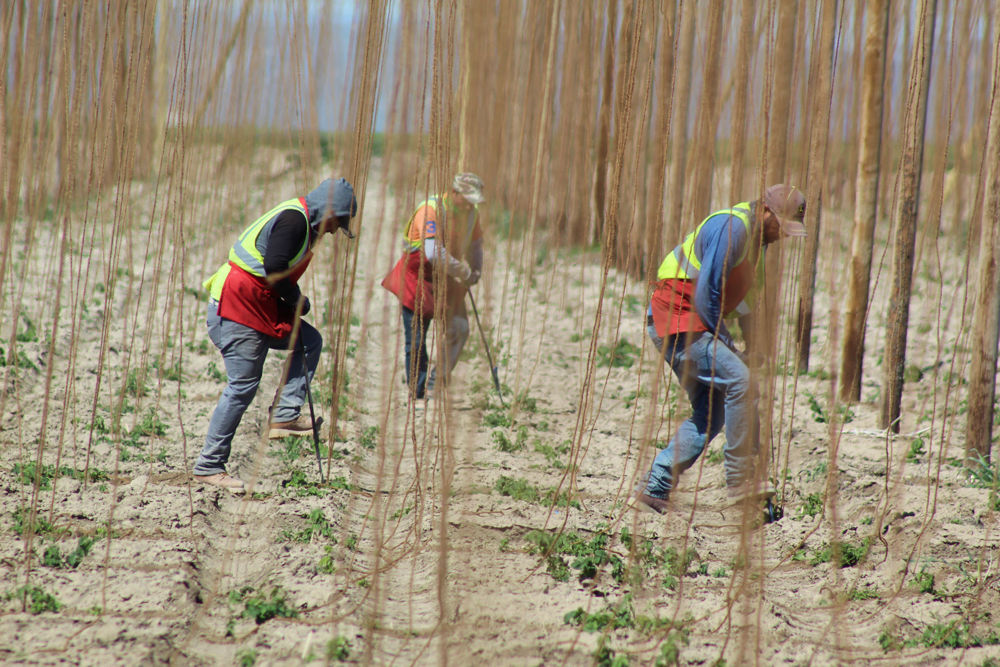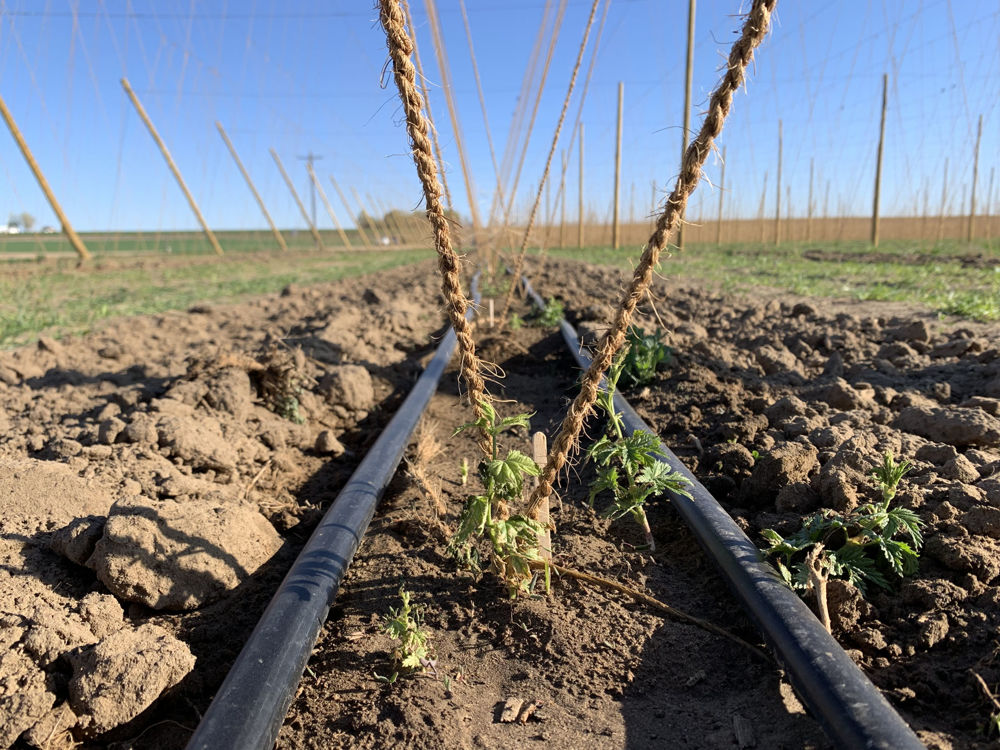It's (finally) spring and hop growers in Idaho are gearing up for another growing season. Idaho is the second largest hop-producing state in the United States, and springtime is a crucial time for growers as they prepare their fields for the upcoming growing season.
In SW Idaho, growers typically begin their preparations in late winter or early spring, depending on weather conditions. This includes tasks like pruning, irrigation system preparation, planting, stringing/twining, and training. All vital, and thoughtfully timed steps to ensure a successful growing season and harvest.
Pruning: When hops emerge from dormancy they are often mechanically or chemically pruned. This encourages strong, secondary growth. Bines can take several weeks to regrow before they can be trained so the timing of pruning is crucial.
Irrigation: Hops in Idaho are watered by drip irrigation systems to maximize efficiency, and deliver nutrients directly to the plant root. Tubes with emitters are laid on the ground near the root zone. These tubes are removed each fall before harvest and replaced at the start of each growing season.
Planting: In the instance of new fields or replacing a variety in an existing field, pots (like a start you might purchase for your garden) or rhizomes are planted. Hop rhizomes are small sections of root from a mature hop plant that can be replanted to grow a new plant. It can take up to three years (in Idaho) for the plants to reach full maturity and optimum production.
Stringing/Twining: Stringing hops is tying a string to the top wire of the hop trellis and stapling the end of the twine into the ground next to the hop plant. This gives the bines something to grow up.
Training: Arguably one of the most crucial stages of the growing process, involves manually wrapping the bines around the string in a clockwise direction in order to encourage vertical growth. The timing is so crucial because hops trained deliberately at the appropriate time can produce higher yields.
Though the spring season may appear uneventful from the outside eye, it is a busy and important time for growers. There is never a dull moment and timing is crucial to the success of the rest of the season and harvest. The hard work, dedication, and commitment of these growers make it possible for Idaho to produce some of the best hops in the world. Therefore providing the best quality hops to Mill 95 and you (the brewer).


Top: Crews in the field staking strings into the base of the hop plant.
Bottom: Hop plants growing alongside two drip irrigation tubes.

